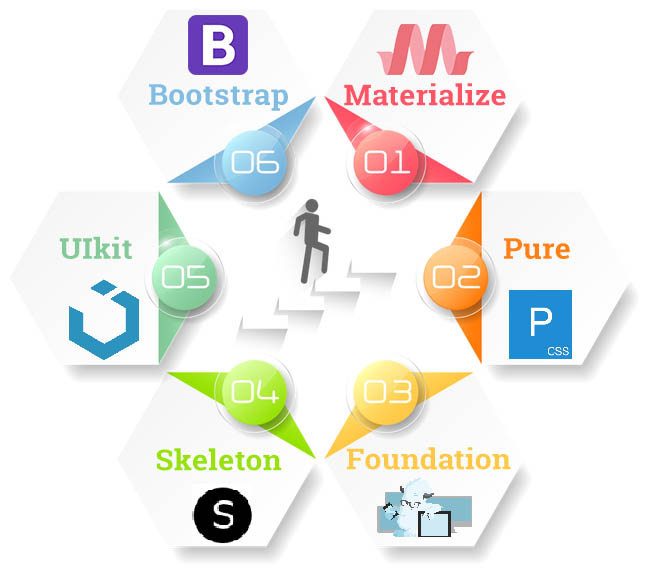Youth Unleashed
Exploring the vibrant voices and trends shaping the youth culture today.
CSS Frameworks: Your New Best Friends for Stylish Web Design
Discover how CSS frameworks can elevate your web design game and make styling effortless. Transform your sites into stunning visuals today!
Exploring the Top CSS Frameworks: Which One is Right for You?
Choosing the right CSS framework can significantly impact the efficiency and effectiveness of your web development projects. With numerous options available, it's essential to assess your specific needs and preferences. Popular frameworks like Bootstrap, Tailwind CSS, and Foundation each offer unique features and capabilities. For instance, Bootstrap is known for its grid system and ready-to-use components, while Tailwind CSS promotes a utility-first approach that allows for greater customization. Understanding these distinctions can help you determine which framework aligns best with your project goals.
Another crucial factor to consider when selecting a CSS framework is community support and documentation. Well-established frameworks often have extensive online resources, tutorials, and forums that can aid in the development process. For example, Bootstraps' documentation is highly regarded and offers a comprehensive guide for developers at all levels. In contrast, emerging frameworks like Bulma may have less comprehensive documentation, but they can also provide modern solutions with a fresh perspective. Explore the community behind each framework to ensure you have access to the support needed to successfully implement your design.

How CSS Frameworks Can Transform Your Web Design Process
CSS frameworks have revolutionized the way web designers approach the development of their projects. By providing a standardized set of tools and components, these frameworks enable developers to streamline their workflow and focus on the creative aspects of design. For instance, frameworks like Bootstrap and Tailwind CSS offer responsive grid systems and pre-designed UI elements that can save hours of coding. As a result, designers can create visually appealing websites faster, with a consistent look across different devices.
Furthermore, utilizing a CSS framework promotes best practices and enhances collaboration among team members. By adhering to a common framework, teams can easily share code and maintain a cohesive style throughout the project. This leads to improved efficiency, as well as a more organized codebase. More importantly, with the extensive documentation and community support offered by popular frameworks, new designers can quickly get up to speed. To learn more about the impact of CSS frameworks on web design, check out this informative article on Smashing Magazine.
A Beginner's Guide to Using CSS Frameworks for Stunning Websites
CSS frameworks are essential tools for web developers aiming to create visually appealing and responsive websites with reduced effort. By providing a pre-defined structure of CSS styles, classes, and components, frameworks allow beginners to focus on design without getting bogged down by code. Some popular CSS frameworks include Bootstrap, Tailwind CSS, and Foundation. These frameworks come with built-in grid systems, typography styles, and pre-styled components that can significantly enhance your web development experience.
Getting started with a CSS framework is straightforward. First, choose a framework that fits your project requirements. For instance, Bootstrap is great for rapid prototyping, while Tailwind CSS offers greater customization through utility classes. Once you've selected a framework, link the CSS file in your HTML document like this:
<link rel='stylesheet' href='https://cdn.jsdelivr.net/npm/[email protected]/dist/css/bootstrap.min.css'></link>After linking, you can start using pre-defined classes to style your elements. Incorporating these frameworks into your workflow not only speeds up the development process but also ensures a consistent design across your website.